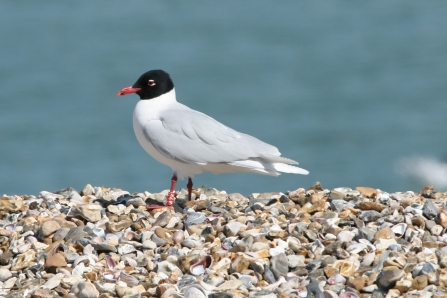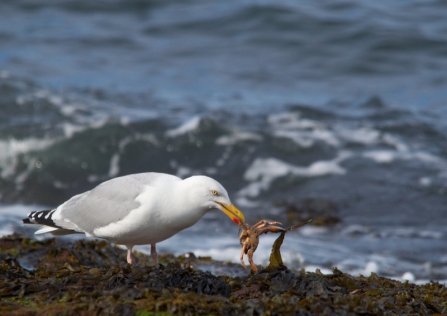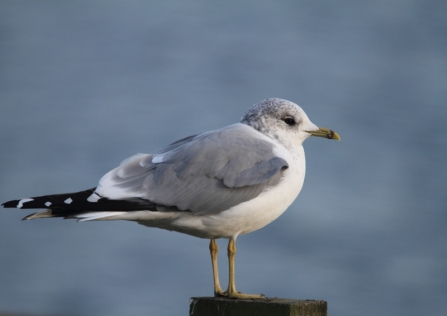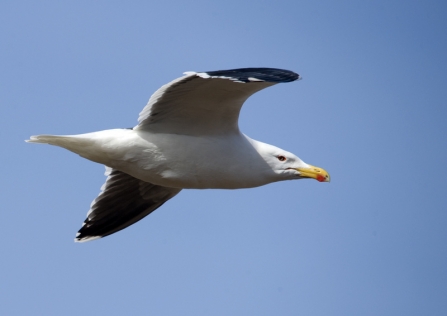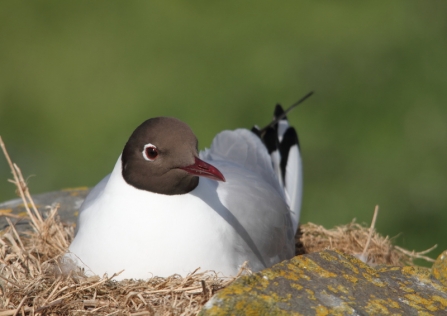
Black headed gull © Tom Hibbert
Black-headed gull
These birds have a dark chocolate-brown head in summer and a white head with dark smudges during winter. The saltmarshes of the Solent were once home to some of the largest colonies in Britain. Sea level rise has contributed to a significant decrease in their numbers and even the total loss of some colonies. Many now nest inland – we have a number of black-headed gulls nesting at Blashford Lakes nature reserve.


